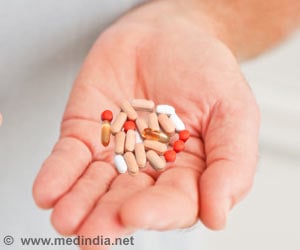Using someone else's medication was the most common form of misuse at 88 percent, followed by taking more medication than prescribed at 39 percent.

TOP INSIGHT
Non-medical use of medication prescribed for attention-deficit-hyperactivity disorder and, overdose of the medicine was common among teens.
Wang, now a statistical research coordinator in the UF College of Medicine's department of pathology, immunology and laboratory medicine and the department of health outcomes and policy, analyzed data from the National Monitoring of Adolescent Prescription Stimulants Study, which surveyed more than 11,000 youth ages 10 to 18 living in and around 10 U.S. cities. Interviewers recruited participants at entertainment venues, such as shopping malls, movie theaters, sports and recreation centers, arcades and skate parks. The study was carried out during four waves between 2008 and 2011.
About 7 percent of all respondents reported they had used a prescription stimulant during the past 30 days. Among those 750 adolescents, 54 percent reported some type of non-medical use, such as taking more pills than prescribed by their doctor, using someone else's medication, or smoking, snorting or sniffing the medication instead of taking by mouth. Using someone else's medication was the most frequently reported form of misuse at 88 percent, followed by taking more medication than prescribed at 39 percent.
"It is so important for physicians and parents to counsel youth who have prescription stimulants to never share their medications," said co-author Linda B. Cottler, Ph.D., M.P.H., a dean's professor, chair of the department of epidemiology and Wang's mentor.
The UF study was unique in that it differentiated two different types of non-medical users: those who exclusively used stimulants non-medically, and teens who reported both using their own stimulant medication as prescribed and some form of non-medical use within the past 30 days. This group of medical and non-medical users is an important group for future study, Wang said, because they could be serving as a source for shared or traded prescription stimulant medication.
Understanding differences in behavior and friend networks between the two types of non-medical users can help experts develop targeted educational programs to prevent prescription stimulant misuse, said Wang, who is currently working with Florida's Prescription Drug Monitoring Program to analyze multiple sources of data to understand current and emerging trends of prescription drug abuse.
Source-Eurekalert
 MEDINDIA
MEDINDIA




 Email
Email





